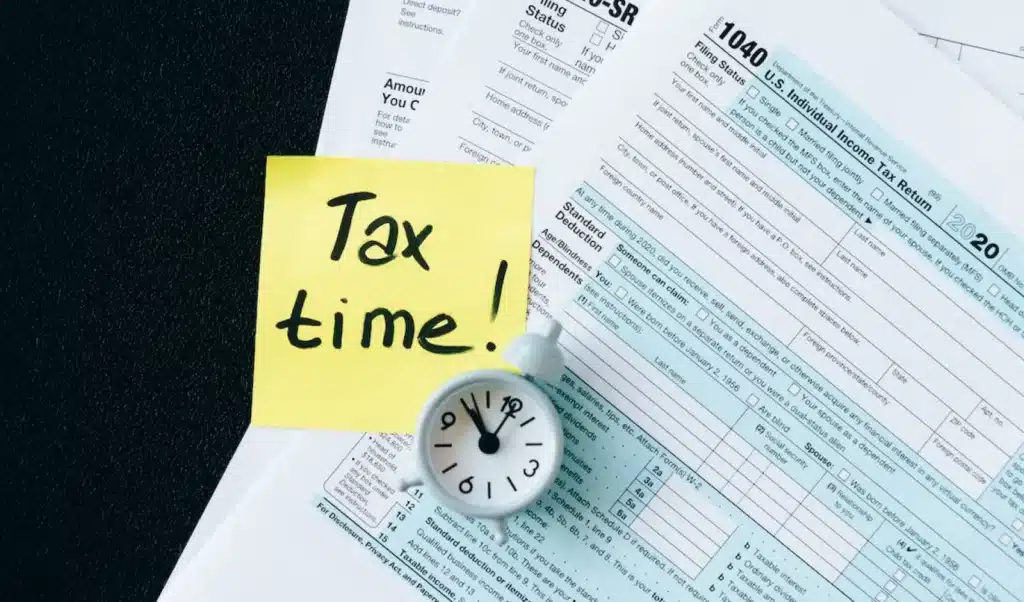Introduction
Taxation is a fundamental aspect of modern societies, providing essential revenue for public services and infrastructure development. Tax brackets and rates form the cornerstone of income tax systems, shaping the way individuals and businesses contribute to government coffers. In this guide, we’ll break down the complexities of tax brackets and provide you with actionable insights to make informed financial decisions.
What Are Income Tax Brackets? Understanding Tax Brackets
Tax brackets represent a tiered structure in which different portions of your total income are taxed at varying rates. As your income increases, you move into higher tax brackets, resulting in a progressive tax system. This approach ensures that individuals with higher incomes contribute a larger proportion of their earnings to taxes, while those with lower incomes are taxed at lower rates.
How Do Income Tax Brackets Work?
Imagine a series of buckets, each representing a different tax bracket. When you earn money, it fills up these buckets sequentially. The first bucket, representing the lowest tax bracket, is filled with the portion of your income that falls within that bracket’s range. The second bucket is then filled with the income that falls within the second bracket, which might have a slightly higher tax rate. This pattern continues for each subsequent bracket.

How Do You Determine What Tax Bracket You’re In?
To determine your tax bracket, you need to know your total taxable income, which includes wages, self-employment income, rental income, and other sources. Find the range that your income falls into and identify the corresponding state income tax bracket. It’s important to note that you’re only taxed at the rate of the bracket your income enters, not your entire income.
Federal Income Tax Brackets. Federal Income Tax Rate 2022 – 2023
There are seven tax brackets for 2023: 10%, 12%, 22%, 24%, 32%, 35% and 37%.
Individual Income Tax Brackets:
- Tax rate 10%: Taxable income $0 to $11,000.
- Tax rate 12%: Taxable income $11,001 to $44,725
- Tax rate 22%: Taxable income $44,726 to $95,375
- Tax rate 24%: Taxable income $95,376 to $182,100
- Tax rate 32%: Taxable income $182,101 to $231,250
- Tax rate 35%: Taxable income $231,251 to $578,125
- Tax rate 37%: Taxable income $578,126 or more
The federal tax brackets for married filing jointly:
- Tax rate 10%: Taxable income $0 to $22,000
- Tax rate 12%: Taxable income $22,001 to $89,450
- Tax rate 22%: Taxable income $89,451 to $190,750
- Tax rate 24%: Taxable income $190,751 to $364,200
- Tax rate 32%: Taxable income $364,201 to $462,500
- Tax rate 35%: Taxable income $462,501 to $693,750
- Tax rate 37%: Taxable income $693,751 or more
What Does It Mean to Have a High Federal Tax Bracket?
Having the highest tax bracket indicates that a significant portion of your income is subject to higher tax rates. While higher tax brackets imply greater tax liability, it’s essential to understand that only the income within that bracket is taxed at the higher rate. Your overall tax liability is a combination of different rates applied to specific income ranges.
Difference between Marginal Tax Rate and Effective Tax Rate
The marginal tax rate and effective tax rate are two important concepts in the field of taxation. The marginal tax rate refers to the percentage of tax that is paid on an additional dollar of income earned. It is based on the tax bracket that a taxpayer falls into. For example, if a taxpayer’s income level puts them in the 25% tax bracket, then their marginal tax rate would be 25%.
On the other hand, the effective tax rate is the actual percentage of tax that is paid on the total state income earned. It takes into account all the tax deductions, credits, and exemptions that a taxpayer is eligible for. Therefore, the effective tax rate is usually lower than the marginal tax rate. It provides a more accurate representation of the overall tax burden a taxpayer faces. Understanding the difference between the marginal and effective tax rates is crucial for individuals and businesses in planning their finances and tax strategies.

Strategies for Tax Bracket Optimization
Optimizing your tax bracket involves strategic financial planning. Consider techniques such as maximizing pre-tax contributions to retirement accounts, timing capital gains, and leveraging tax credits. By understanding the thresholds between brackets, you can make informed decisions that minimize your tax liability.
Common Misconceptions about Income Tax Brackets and Tax Rates
Misconceptions about tax brackets abound. It’s important to understand that even if you move into a higher bracket, only the income within that bracket is taxed at the higher rate. Your overall tax situation is still favorable due to the progressive nature of the tax system.
Tax Planning Techniques
Here are some important tax planning techniques that you should remember:
- Maximize deductions: Be aware of all possible deductions and credits that you may be eligible for and ensure that you are claiming them to reduce your taxable income.
- Utilize tax shelters: Consider utilizing tax-advantaged investment vehicles such as individual retirement accounts (IRAs), 401(k)s, or health savings accounts (HSAs) to reduce your taxable income and grow your wealth.
- Timing of income and expenses: Plan the timing of your income and expenses strategically. For example, you may decide to defer income to a lower tax year or accelerate deductible expenses to maximize your tax savings.
- Take advantage of tax credits: Research and understand the various tax credits available to you, such as the Child Tax Credit, Earned Income Tax Credit, or Education Credits. These credits can directly reduce your tax liability.
- Consider tax-efficient investments: Invest in tax-efficient investment vehicles, such as index funds or tax-managed mutual funds, that minimize taxable distributions and capital gains.
- Review your tax situation regularly: Stay updated on changes in tax laws and review your tax situation regularly to ensure that you are optimizing your tax planning strategies.

Factors Affecting State Tax Brackets
There are several factors that can affect state tax brackets. These factors include:
- Income levels: State tax brackets are often based on different income levels. Higher income levels are typically subject to higher tax rates, while lower income levels may have lower tax rates or be exempt from certain taxes altogether.
- Tax policies: Each state has its own tax policies and laws governing income tax. These policies can vary widely from state to state and can include different deductions, exemptions, and credits that can impact the tax brackets.
- Economic conditions: Economic conditions can also play a role in determining state tax brackets. For example, during times of economic growth, states may have higher tax revenue and can afford to lower tax rates. Conversely, during times of economic downturn, states may increase tax rates to generate more revenue.
- Population and demographics: The population and demographics of a state can influence tax brackets. States with higher populations and more affluent residents may have higher tax brackets to generate more revenue.
- Budgetary needs: The budgetary needs of each state can also influence tax brackets. States with higher budget requirements may need higher tax revenue and can do so by implementing higher tax rates or increasing tax brackets.
- Political factors: Political factors can also influence state tax brackets. Political leaders and policymakers may have different views on taxation, and this can impact the tax rates and brackets set by each state.
- Cost of living: The cost of living in a state can affect tax brackets. States with higher costs of living may have higher tax brackets to account for the increased expenses residents face.
It’s important to note that these factors can vary widely from state to state and can change over time as economic and political conditions change. Each state has its own unique tax structure and formula for determining tax brackets.
The Role of Tax Credits and Deductions
Total tax credits and deductions play a vital role in reducing your overall tax burden. By strategically utilizing these tools, you can effectively lower your taxable income and potentially move into a lower tax bracket.

Keeping Up with Tax Law Changes
Tax laws are subject to change, and these changes can impact your tax bracket and liability. It’s crucial to stay up-to-date with legislative updates and consult with tax professionals to navigate any potential impact on your finances.
Planning for Different Tax Brackets
As your income fluctuates over the years, your tax bracket may change. It’s wise to have a long-term tax strategy that accounts for these fluctuations, ensuring you’re prepared for any financial scenario.
A tax professional can provide invaluable expertise and assistance when it comes to taxes. They can help individuals and businesses navigate the complex tax system, ensuring compliance and minimizing the risk of audits or penalties. Tax professionals stay up-to-date with the latest tax laws and regulations, allowing them to identify potential deductions and credits that can save their clients money.
They can also offer personalized advice and guidance for tax planning strategies, helping individuals and businesses make informed decisions that optimize their tax situation.
Conclusion
Navigating tax brackets requires a combination of knowledge, strategy, and adaptability. By understanding the nuances of how tax brackets work and employing effective tax planning techniques, you can optimize your financial situation while fulfilling your tax obligations.
FAQs
Q1: Can I move to a lower tax bracket by reducing my income?
A1: Yes, strategically reducing your taxable income can place you in a lower tax bracket, resulting in lower overall taxes.
Q2: Are tax brackets the same for all filing statuses?
A2: No, tax brackets vary depending on your filing status, whether you’re single, married, or head of household.
Q3: What happens if my income falls between two tax brackets?
A3: Your income is taxed at the rate of the bracket it enters, not a higher rate for the entire income.
Q4: How often do tax brackets change?
A4: Tax brackets can change due to inflation adjustments and shifts in tax legislation. It’s important to stay informed about these changes.
Q5: Do state taxes follow the same bracket system?
A5: State tax systems vary, with some using a bracket system similar to federal taxes, while others employ flat tax rates or no income tax at all.










